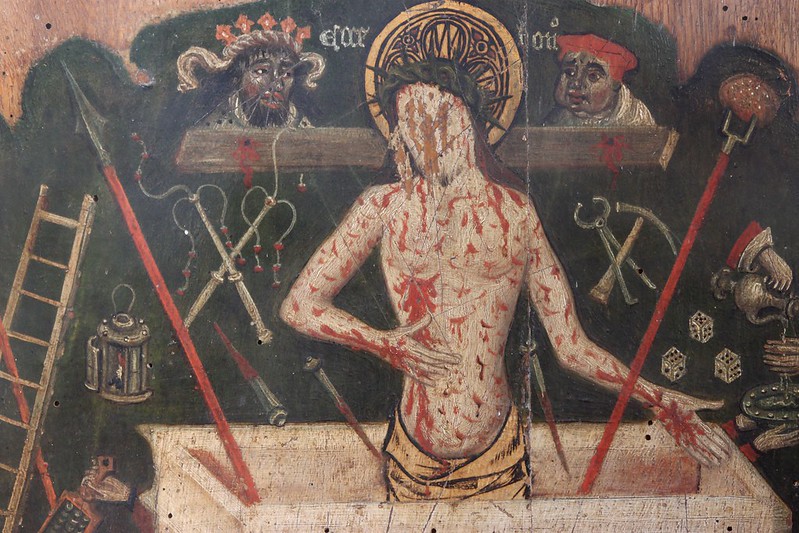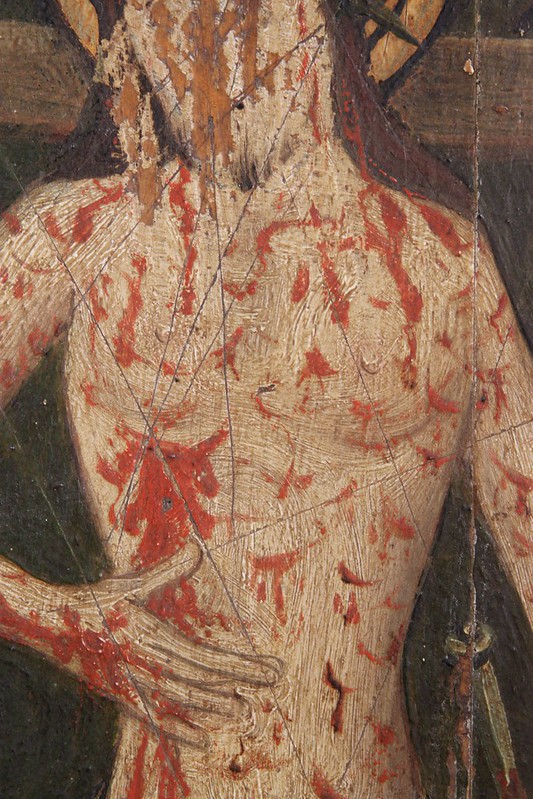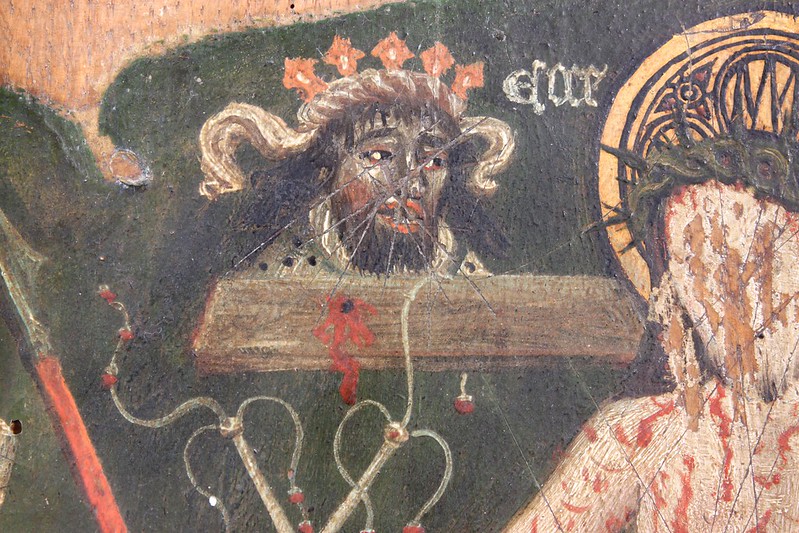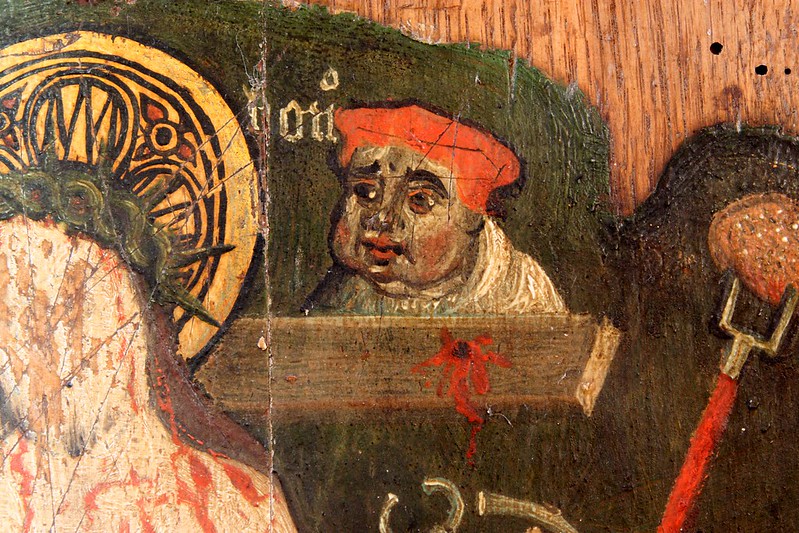The Image of Pity - the Wellingham rood screen.
Wellingham is a remote little hamlet in the middle of Norfolk to the south of Fakenham. It's church, heavily rebuilt in 1896 is rather undistinguished, but it contains a great treasure. The dado of a rood screen from the 1530s.
Rather interestingly the screen is inscribed and precisely dated. The inscription on the upper part of the dado tells is that it was painted in 1532, right on the eve of the Reformation and that the painting was paid for by a group of parishioners working collectively, including Robert Dorant, his two wives Isabel and Beatrice and John Neell, among others. The images on the screen are a rag tag of different figures, including St George and St Michael, perhaps reflecting corporate decision making in the choice of iconography?
When you examine the south portion of the screen (see photo above) it is clear from the large rectangular unpainted section of the dado, that a side altar was once placed here in the nave up against the screen. The area above the blank space incorporates two small scale painted panels, that formed, in effect, a painted altarpiece. The second of these panels is sadly obliterated, but the first, though damaged by deliberate iconoclasm, is still in good condition. It is this image, unusual on a rood screen, but common in early sixteenth century art and popular devotion, that I would like to focus on in this article.
The image is a standard image from the late medieval iconographic stable: the Man of Sorrows, or the Image of Pity. Christ is rising from the tomb, he is displaying the wounds of his Crucifixion for all to see. He is surrounded by the instruments of his passion, brutal instruments of torture. Behind him is his cross, above his head the words 'Ecce homo' behold the man - the words that Pontius Pilate uttered as he showed Jesus to the people. This is an image we are to consistently behold, to linger upon, to deeply process.

The image painted here in Wellingham was an image that became hugely popular during the fourteenth century and it occurs not only as a separate and isolated image as it is here, but also as part of the equally popular image of the miraculous Mass of St Gregory. It was reproduced three dimensionally, in fine art, in panel paintings and with the burgeoning print trade at the end of the fifteenth century, as a woodcut with a plenary indulgence attached to it. The popularity of this image and the image of Our Lady of Pity, the Pieta, Mary holding the dead body of Christ, reflects the developing intensity of late medieval Eucharistic theology. In the image from Wellingham, the Eucharistic symbolism of the image is clear. Christ is displaying the wound in his side to us - from which issues a rivulet of his blood.

At the altar below this image, the priest would mix water and wine in the chalice symbolically representing the water and blood that flowed from Christ's side. As he elevated the chalice, the doctrine of Transubstantiation developed in the medieval west, held that the water and wine became the very blood of Christ. The Image of Pity, the Man of Sorrows in this liturgical context, helps to underline the prevailing Eucharistic theology - it is incorporated into this altarpiece to create an intense visual experience for priest and people at mass. This image was so potent, it so summed up the intensity of late medieval Eucharistic theology (a theology that the Reformation tried to distance the English church from), that a reformer has gouged away the face of Christ. Christ was was no doubt gazing outwards to meet the eyes of the kneeling worshipper at mass - beholding us, as we are to behold his image.
There is another dimension to this image at Wellingham that is important to draw to your attention. Above the head of Christ on either side are two small diminutive heads. To the left is King Herod, bearded and crowned.

To the right is the high priest Caiphas, plump and double-chinned in the scarlet cap of a cardinal.

This screen was put up in 1532, is this therefore Henry VIII and Cardinal Wolsey portrayed as Herod and Caiphas? By 1532 Wolsey Henry's high priest had already fallen from grace and had died having failed to achieve the king's divorce. In these images do we perhaps have here a political critique of the changing face of England?

Comments
Simon Cotton